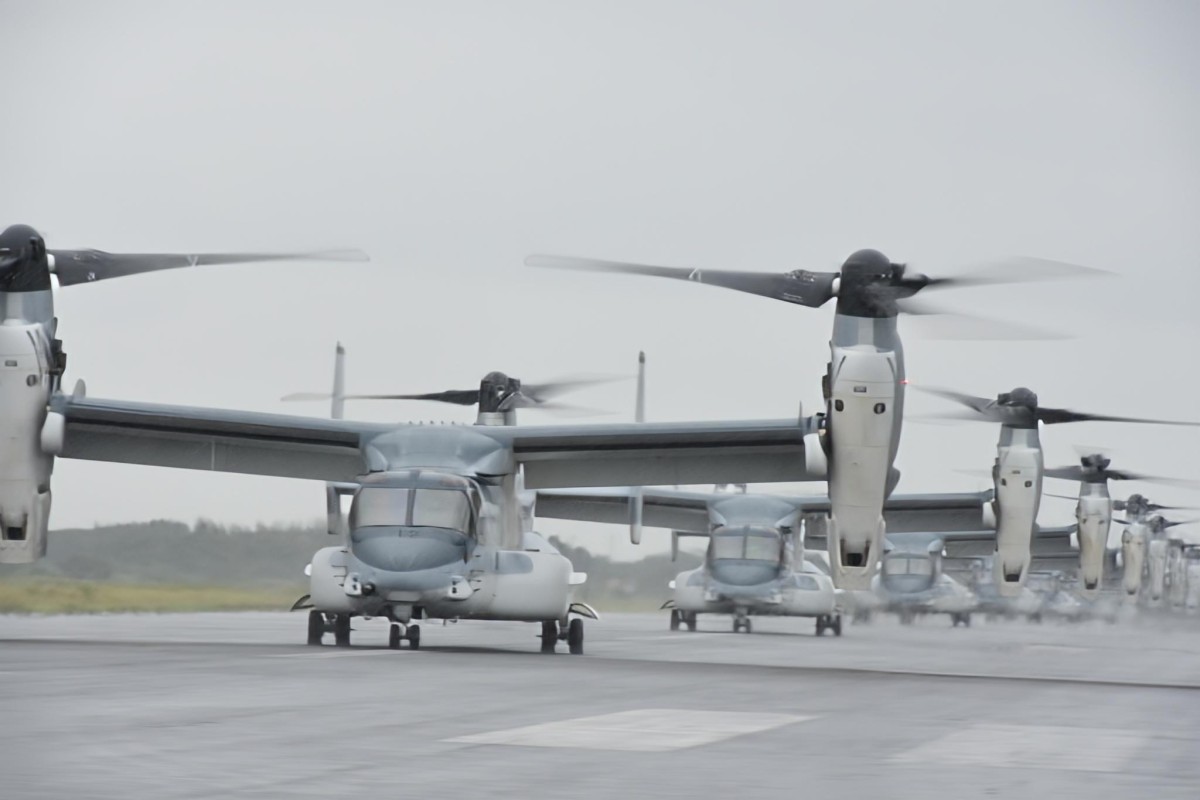The recent accident involving a Japanese Ground Self-Defense Force (GSDF) V-22 Osprey transport aircraft has been attributed to human error, according to findings released by the GSDF on November 14.
The incident occurred on October 27 on Yonaguni Island, a remote location in Okinawa Prefecture, during Japan-US joint exercises.
The V-22 Osprey was attempting to take off from Camp Yonaguni when its left wing struck the ground. Although the aircraft sustained damage, none of the 16 personnel on board, including three US Marines, were injured.
The damaged Osprey is currently stationed at Yonaguni. After the incident, Japan grounded its fleet of 17 tilt rotors.
At the same time, a team of US Marines was sent to Yonaguni earlier this month to assist Japan in evaluating and implementing safe and feasible recovery solutions for the damaged Osprey.
The GSDF investigation found that the pilot had neglected to activate the “interim power switch,” a critical control providing additional engine power necessary for safe takeoff.
According to established protocols, the switch must be engaged after starting the engine and before takeoff to prevent a loss of altitude. Failure to follow these procedures resulted in insufficient power, which caused the aircraft’s left wing to strike the ground.
Furthermore, the investigation also mentioned that the pilot failed to “control the aircraft properly when it was near the ground,” causing it to shake from side to side.
Adding to the situation’s complexity, the number of passengers onboard unexpectedly increased just before takeoff. Their delayed arrival led to last-minute adjustments and increased the pilot’s workload, ultimately contributing to the oversight of the interim power switch.
According to a ground staff spokesman, the GSDF has implemented several measures to prevent similar incidents in the future in response to these findings.
In particular, visual markings will be placed around the interim power switch to serve as a reminder during takeoff preparations.
Pilots and copilots will undergo enhanced training, including comprehensive briefings on pre-takeoff operations, simulations replicating various in-flight scenarios, and hands-on exercises.
Additional training will focus on managing emergencies involving power loss during takeoff, with sessions including theoretical lectures, simulator drills, and actual flight practice.
Moreover, the GSDF is introducing a detailed emergency response plan to improve readiness, with pilots receiving guidance from their commanding officers throughout the planning and implementation stages.
This approach aims to strengthen pilot proficiency and reduce the likelihood of human error during critical operations, especially in high-stress situations like disaster-response exercises.
Safety Concerns Persist
The Osprey’s troubled history has been marked by a series of safety concerns. Between December and March, both the US and Japanese Ospreys were grounded after last year’s November 29 crash of an Air Force Special Operations Command tiltrotor off Yakushima, an island located south of Kyushu in southern Japan, that killed eight people.
Six crew members were stationed at Japan’s Yokota Air Base, while two were based at Kadena Air Base. All were part of the Air Force’s 353rd Special Operations Wing.
This crash became the deadliest Air Force mishap since 2018 and marked the fourth fatal Osprey accident in just two years, contributing to a large death toll of 20 US service members in Osprey-related incidents since March 2022.
The V-22 Osprey is a tiltrotor aircraft that combines the vertical lift capability of a helicopter with the speed and range of a fixed-wing plane. This unique design allows it to operate in areas where traditional fixed-wing aircraft cannot land, making it a vital asset for military operations.

The US military currently operates hundreds of V-22s, with the Marine Corps owning nearly 350 of these aircraft. The Air Force and Navy each manage smaller fleets of around 50 and 30 units, respectively.
However, despite its critical role, the Osprey has faced persistent safety issues throughout its service history, with numerous fatal accidents since its first flight in 1989.
These recurring problems, particularly with the gearbox system, have earned the aircraft a notorious reputation, leading to its grim nickname, “the widow-maker.” The safety concerns surrounding the Osprey continue to fuel doubts about its reliability, raising alarm in both Japan and the US military circles.
- Contact the author at ashishmichel(at)gmail.com
- Follow EurAsian Times on Google News




